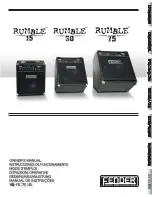
2
secondary station in a prescribed order. The signals are transmitted so
that the pulse groups will never overlap within the reception range of the
stations. This is shown in Figure 1. The receiver determines its
position from the time differences between the transmissions from each
station, and the known positions of the transmitters. If the master
station cannot be received, there is no way to identify the stations and
also no way to determine the receiver's position.
Graph 1
Shape of the Transmitted
LORAN-C Pulse
The Coast Guard controls the accuracy of the LORAN-C system by
precisely controlling the transmitter carrier frequency and the pulse
emission time. The pulse emission time is controlled by accurately
setting the emission time of the third positive zero crossing of the
LORAN rf pulse. This point is called the PULSE TIME REFERENCE
(PTR), and was chosen as a compromise between adequate signal-to-
noise ratio and freedom from skywave interference (discussed below).
The shape of the LORAN pulse is shown in Graph 1. By carefully
tracking the PTR over long time intervals it is possible to extract the
inherent frequency accuracy of the LORAN transmitter's Cesium clock.
This is the function of the FS700 LORAN-C Frequency Standard. The
FS700 will produce a frequency output with the same long-term
accuracy as a USNO controlled Cesium clock as long as a single
station in any GRI is receivable.















































